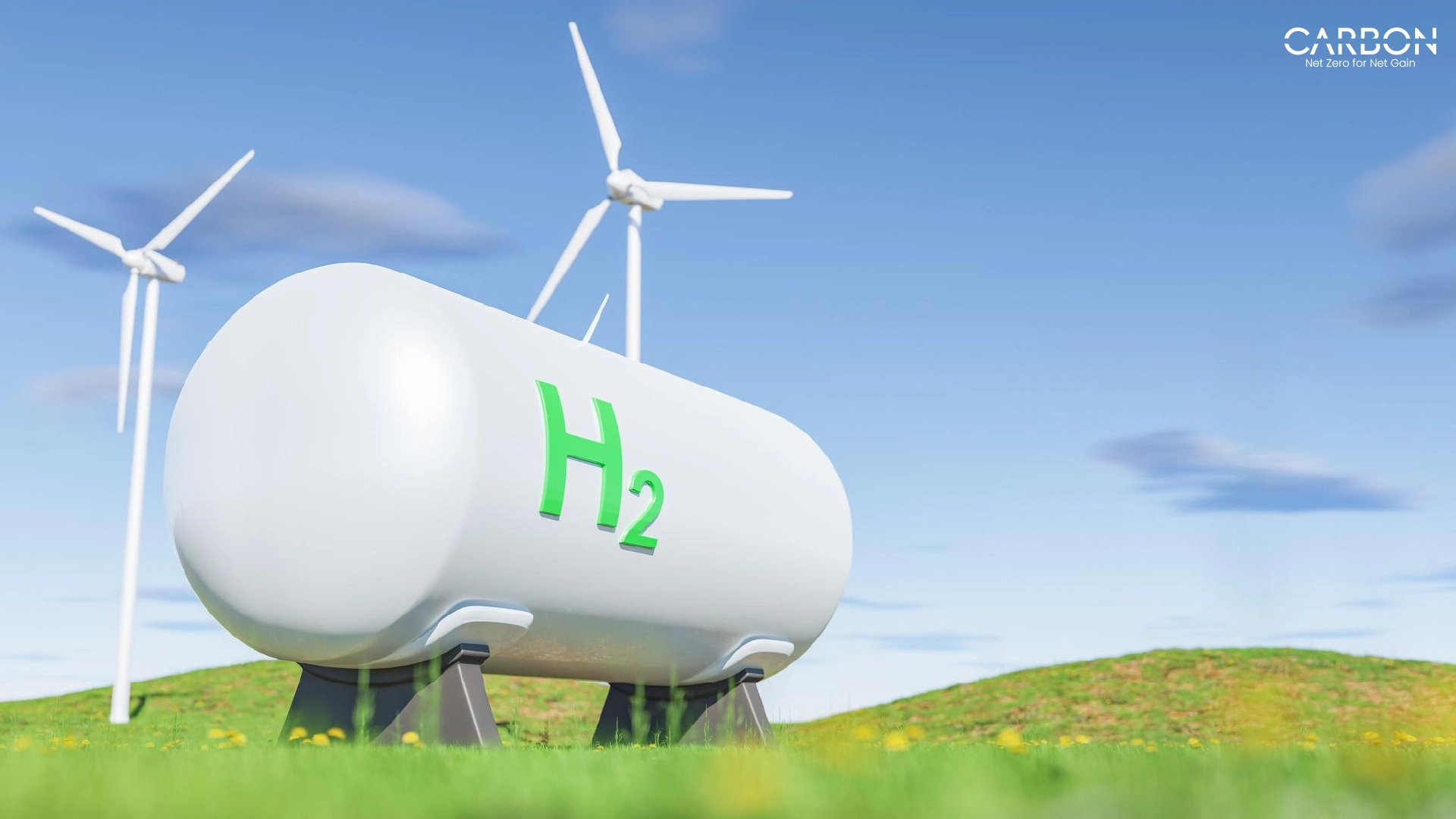Think about the jet engines that take us across the globe, the smartphones we can’t live without, or the soda cans we toss in the recycling bin. What ties them together? Aluminum.
It’s everywhere, shaping our modern lives in ways we barely notice. But there’s a darker side to this versatile metal—a cost paid in carbon emissions. Producing aluminum contributes a jaw-dropping 2% of global CO2 emissions, making it one of the most polluting industrial processes.
Aluminum production relies heavily on fossil fuels, pumping greenhouse gases into the atmosphere at an unsustainable rate. If the aluminum industry were a country, its emissions would rival some of the world’s largest polluters.
That’s A Reality We Need To Change
Here’s where green hydrogen comes in. It’s clean, renewable, and has the potential to replace fossil fuels in aluminum production, drastically cutting emissions without compromising efficiency.
In this blog, we’ll look at how green hydrogen is changing the game for aluminum production. From the challenges to the opportunities, we’ll explore why it’s the key to building a more sustainable future.

Why Does Aluminum Production Carry Such A Heavy Footprint?
It all comes down to the energy-intensive process of smelting, which relies on fossil fuels to power the high-temperature reactions needed to extract aluminum from its ore. That’s not just a climate concern—it’s a financial one.
With energy costs rising and global emissions targets tightening, industries face mounting pressure from all sides: governments demanding compliance, stakeholders expecting sustainability, and competitors moving toward greener solutions.
The aluminum industry needs bold innovation to meet these challenges head-on.
Green Hydrogen: A Game-Changer for Aluminum Production
Transforming one of the most carbon-intensive industries into one of the cleanest is easier said than done. But such is the power of hydrogen that this is now a reality.
Green hydrogen, produced using renewable energy like wind and solar, is not just another alternative fuel.
What is Green Hydrogen?
Unlike traditional hydrogen, which is produced using fossil fuels and emits significant CO2, green hydrogen is created by splitting water into hydrogen and oxygen using clean electricity.
The result? Zero emissions. Add to that its compatibility with renewable energy systems, and you have a fuel that’s as versatile as it is sustainable.
In aluminum production, green hydrogen is already showing its potential. Take the smelting process, for example. Today, it relies heavily on natural gas to achieve the extreme temperatures needed to extract aluminum.
Replace that natural gas with renewable hydrogen, and you’ve eliminated a major source of emissions—without sacrificing performance or efficiency. It’s a win-win for sustainability and the bottom line.
In short, it’s the smart choice. But what does it take to bring this vision to life?
Stories from Across the World
Across Europe, clean hydrogen is already proving its worth in aluminum production. In Navarra, Spain, Norsk Hydro partnered with Fives North America Combustion to produce aluminum using hydrogen instead of natural gas. It was an industrial-scale test that
Taking It to the Next Level
The momentum didn’t stop there. In Norway, Hydro Høyanger is pushing the boundaries further. With NOK 83.3 million in government funding, this three-year pilot is using green hydrogen to recycle post-consumer scrap aluminum.
Advanced technologies like PEM electrolysis and hydrogen burner systems are being tested to integrate hydrogen seamlessly into existing processes. The early results are promising: no drop in productivity, no impact on metal quality, and clean aluminum coming out of the process.
What Do The Early Outcomes Say
These early successes demonstrate clean hydrogen’s viability in aluminum production. But as with any groundbreaking technology, scaling up is the next frontier.
Can the industry overcome challenges like infrastructure gaps and high costs to bring this innovation to the mainstream?
What Makes Green Hydrogen Worth Pursuing?
The pilot projects in Spain, Norway, and beyond have shown that green hydrogen works—and it works well. But taking a handful of successful tests and scaling them for global adoption is another challenge entirely.

1. Hydrogen can Replace Fossil Fuels
This is especially true in hard-to-abate sectors like aluminum without requiring complete process overhauls. The compatibility with existing systems makes it a pragmatic choice for industries looking to reduce emissions quickly.
2. Global Policy is Driving the Transition
Programs like the EU’s Green Deal and the U.S. Inflation Reduction Act are funneling billions into clean hydrogen infrastructure and technology. These aren’t just incentives; they’re shaping the competitive landscape for industries worldwide.
3. Emerging Hydrogen Leaders
Several countries, including Japan, Germany, and Australia, are positioning themselves as hydrogen leaders, creating a competitive advantage for early adopters. The emergence of global hydrogen hubs means more accessible supply chains in the future.
4. Lower Production Costs Expected
As electrolyzer technology improves and economies of scale kick in, production costs are expected to drop by as much as 50% over the next decade. Companies adopting hydrogen now could lock in financial and sustainability advantages as markets tighten.
What’s Slowing Progress?
1. Infrastructure is far from ready.
Hydrogen transport and storage require specialized systems that many regions don’t yet have. Unlike traditional fuels, hydrogen’s low energy density means it needs more space and advanced compression or liquefaction methods, creating logistical bottlenecks.
2. Electricity is the linchpin—and the bottleneck.
Green hydrogen production depends entirely on renewable energy. Without massive investment in wind and solar capacity, hydrogen projects risk competing for already limited green electricity supplies. For countries lagging in renewable energy deployment, this poses a significant hurdle.
3. The supply chain can’t keep up.
Key components like electrolyzers, fuel cells, and hydrogen-ready burners are in high demand but short supply. Manufacturers are struggling to scale up production quickly enough, leading to higher costs and longer project timelines.
4. Costs are still a major deterrent.
Clean hydrogen is currently 2–4 times more expensive than fossil-fuel-based hydrogen. While costs are projected to fall, the upfront capital investment needed for hydrogen infrastructure remains a significant barrier for many industries.

What Does the Path Ahead Look Like?
1. Aligning Hydrogen Adoption
Building renewable capacity ahead of hydrogen projects ensures a reliable electricity supply without creating competition with other energy needs.
2. Local Hubs are More Practical
Hydrogen’s low energy density makes this possible and gives local hubs an advantage over global transport networks. Industries should focus on setting up production and consumption clusters that minimize transport and storage requirements.
3. Try Other Methods
Most discussions focus on electrolyzers, but other methods, such as biomass gasification and methane pyrolysis, could offer alternative pathways to green hydrogen. Diversifying technologies reduces dependency on a single production process.
4. Keeping Everyone in the Loop
Industries must engage with suppliers and policymakers now to address infrastructure gaps and accelerate component production. Long-term partnerships will be key to overcoming bottlenecks and managing costs.
5. Achieving the Full Potential
For hydrogen to reach its full potential, global standards for transport, storage, and use need to be established. Consistency across regions ensures smoother implementation and lowers costs through shared practices.
Future Trends in Green Hydrogen for Aluminum
The aluminum industry is standing at a tipping point. Over the next decade, green hydrogen is set to become a major player in industrial decarbonization.
Hydrogen hubs—centralized ecosystems for producing, storing, and distributing hydrogen—are already reshaping the global energy landscape.
The Rise Of Hydrogen Hubs
- Europe is leading the charge with projects like the Northern Netherlands Hydrogen Valley and the Port of Rotterdam, both designed to connect renewable energy with industrial users.
- Australia and the Middle East are positioning themselves as key exporters of green hydrogen, leveraging abundant solar and wind resources to produce hydrogen at scale.
- The U.S., backed by the Inflation Reduction Act, is developing multiple hubs to serve domestic industries, including aluminum.
Renewable Energy Policies Are Driving Adoption
- Ambitious targets: The EU’s goal to produce 10 million tons of green hydrogen annually by 2030 is pushing industries to adapt quickly.
- Financial incentives: Subsidies, tax breaks, and carbon pricing schemes are making green hydrogen more attractive to industries looking to future-proof their operations.
The Aluminum Industry: What This Means for the Next Decade

1. Slash Emissions Across the Value Chain
- As hydrogen replaces fossil fuels, companies will be able to align with stricter global emissions standards while maintaining operational efficiency.
2. 50% Lower Production Costs by 2030
- With technological advancements and economies of scale, green hydrogen production costs are expected to fall drastically.
- For aluminum, this could mean a realistic path to carbon-neutral production.
3. Leaders in A Decarbonized Market
- Companies that adopt early adoption will also attract sustainability-focused investors and eco-conscious customers.
The Challenge: How Do We Get There?

A Decade of Transformation: Where We’re Headed
Industries that embrace green hydrogen today will drive the charge toward a decarbonized economy, shaping a world where aluminum production aligns with climate solutions.
Why This Matters Now
- Delaying adoption risks falling behind competitors who are already aligning with hydrogen hubs and renewable energy grids.
- Investing in green hydrogen today means positioning your business for a future where sustainability is non-negotiable.
The Role of CarbonMinus in the Green Hydrogen Transition
Switching to clean hydrogen is an opportunity for industries to rethink how they manage energy, optimize resources, and meet sustainability goals.
With CarbonMinus you get the tools needed to manage the complexity of integrating innovative solutions like this.
How CarbonMinus Supports Green Hydrogen Adoption
1. Real-Time Monitoring to Keep Energy on Track
Integrating green hydrogen into existing systems means keeping a close eye on energy use. CarbonMinus offers:
- Continuous visibility into energy performance, ensuring seamless integration of new processes.
- Tools to pinpoint inefficiencies, making it easier to align renewable energy sources with operational needs.
- Actionable insights to maintain efficiency while industries adapt to hydrogen-based energy systems.
Know more at www.carbonminus.com.
2. Predictive Tools to Plan Ahead
Green hydrogen brings new challenges, from managing renewable energy inputs to handling fluctuating energy demand. CarbonMinus helps industries stay prepared by:
- Forecasting energy requirements to ensure resources are aligned with operational goals.
- Identifying risks, such as potential supply chain slowdowns or unexpected surges in demand.
- Optimizing renewable energy use to get the most out of every resource.
3. Compliance That Works for You
Sustainability regulations are only getting more complex, and integrating new energy sources like clean hydrogen makes alignment even more critical. CarbonMinus simplifies this process by:
- Automating compliance reporting, so teams stay on top of evolving global standards like ISO50001 and ISO14064.
- Offering real-time alerts for potential compliance risks, reducing chances of missteps.
- Delivering detailed reports that highlight progress on emissions goals, helping build trust with stakeholders.
Laying the Groundwork for the Future
Adopting green hydrogen requires systems that can adapt to new energy dynamics and meet strict regulatory requirements. CarbonMinus has the tools industries need to confidently move forward, laying a strong foundation for long-term success.
Lead the Change Today
Ready to transform the way you produce aluminum? CarbonMinus is here to help you navigate the transition with confidence. Contact us today at www.carbonminus.com to get started.
Let’s work together to create smarter energy systems, meet your sustainability goals, and drive real impact.




